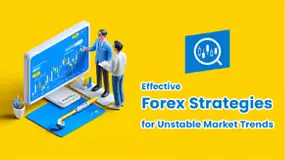简体中文
繁體中文
English
Pусский
日本語
ภาษาไทย
Tiếng Việt
Bahasa Indonesia
Español
हिन्दी
Filippiiniläinen
Français
Deutsch
Português
Türkçe
한국어
العربية
WITH GLOBAL RATES PEAKING, POPULAR EMERGING MARKET FX TRADE HAS RETURNED.
Abstract:Even as markets recover from one of the most turbulent months in years, the odds are in favor of a popular currency trade that enjoys attractive yields and low volatility.

Even as markets recover from one of the most turbulent months in years, the odds are in favor of a popular currency trade that enjoys attractive yields and low volatility.
Investors are once again engaging in so-called carry trades in developing economies, where they borrow in lower-yielding currencies in order to purchase those that provide higher yields, as there are signs that the US economy is slowing down and that global interest rates are peaking. The International Monetary Fund has predicted that emerging markets, notably those in Asia, will be a bright light even as the US economy weakens, thus for the first time in years, it appears like the ideal conditions are in place for the approach to work.
After three years of losses, a Bloomberg measure of borrowing dollars and investing the money in a basket of emerging currencies has recovered nearly 5% this year, reaching its highest level since 2021. Returns this month skyrocketed above a developed-market peer index as speculation that the Federal Reserve is nearing the end of its tightening cycle increased because to fears of a banking crisis that has already started in the US.
In a counterintuitive move, Eimear Daly, an emerging-market strategist at NatWest Markets Plc in London, suggested that the recent wave of financial market volatility in March might be just the thing to rekindle EM carry trades. “Investors will be attracted back in to EM high-carry currencies, with large carry on offer,” according to the prediction that US carry will be curbed.
Although fast policy tightening by major central banks appears to be coming to an end amid concerns over growth, interest in carry trades has been reviving. Notwithstanding the volatility of the foreign currency markets, which has the potential to drastically alter possible returns, that has been sufficient to increase trust in the strategy.
Citigroup Inc. strategists, including Adam Pickett, wrote in a note on Thursday that “carry strategies are starting to look appealing again.” They added that “emerging-market foreign-exchange returns hold up well in US-centric recessions.” EMFX might be a better spot to hide out if emerging-market fixed income and equities continue to struggle.
According to data provided by Bloomberg, dollar-funded trades with money invested in the currencies of Mexico, Colombia, and Hungary have all returned over 6% this year. According to data as of Friday, 17 out of 23 tracked emerging-market currencies have shown a profit this year while the majority lost money in 2018.
EARLY ARRIVALS
Since their central banks increased interest rates to combat inflation ahead of their developed counterparts, the central banks of a number of emerging-market currencies are particularly alluring carry targets.
Ravi De Mello, a global macro portfolio manager at GAMA Asset Management SA in Geneva, stated that many EM yields are appealing since “most EM countries have risen rates significantly, many starting before the Fed and increasing by more.” He said that the currencies of Brazil, Mexico, India, the Czech Republic, and Poland make for appealing carry trading targets.
Beginning in March 2021, the Brazilian central bank increased interest rates by a total of 1,175 basis points to bring them to the present level of 13.75 percent. The nation's Selic rate offers a sizeable buffer to combat any potential actual deterioration with a premium of 875 basis points above the Fed's benchmark rate.
Benchmark rates in Brazil, Mexico, Colombia, and Chile are all at 7% or higher based on US overnight indexed swaps, easily exceeding current predictions for the Fed rates to peak at around to 5%.
REDUCE VOLATILITY
The huge increases in currency market swings that occurred last month amid fears of a financial crisis are starting to level down once more and pose less of a risk to potential carry traders.
A JPMorgan Chase & Co. index of one-month implied volatility in emerging-market currencies peaked at 11.1% in the middle of March, while banking tensions were increasing. It decreased this month to 9.9%. Comparable measures of volatility for the Group of Seven fell from 11.7% to 10.1%.
By the end of 2021, the EM index had doubled compared to its peer, highlighting the currency volatility that developed-market central banks had caused the year before. The two measurements are almost equal right now.
VARIOUS GROWTH
The advantage of emerging markets' interest rates over those of the US will undoubtedly persist, if the potential for economic growth is any indication.
The International Monetary Fund predicted in January that the US GDP will fall to 1.4% this year and then 1% in 2024. Yet, according to IMF statistics, growth in developing markets will reach 4% in 2023 before rising to 4.2% the following year.
It is anticipated that the IMF will present its most recent predictions this week in light of signs that the world economy is deteriorating.
The EM carry trade should be supported by a modest US recession and a range-bound dollar, according to John Harrison, managing director for emerging-market macro strategy at TS Lombard in London. According to him, the Brazilian real and Mexican peso appear to be the top EM carry trade targets since they will be supported by active central banks and relatively high real interest rates.
WHAT TO SEE
On Tuesday, the Bank of Korea will publish its key rate, with experts predicting that policymakers would maintain their reference rate at 3.5% for the second meeting.
During the course of the week, investors will be watching for indications that the rate of price growth is slowing further as inflation data are due from India, China, Hungary, and Poland.
The central bank of Peru meets on Thursday to decide on interest rates after maintaining borrowing costs at 7.75% at its last two meetings.

Disclaimer:
The views in this article only represent the author's personal views, and do not constitute investment advice on this platform. This platform does not guarantee the accuracy, completeness and timeliness of the information in the article, and will not be liable for any loss caused by the use of or reliance on the information in the article.
Read more

Dark Side of AETOS: They Don’t Want You to Know
AETOS is an Australia-based broker. All over the internet, you will find positive reviews about this broker, but no one is talking about the risks involved with AETOS. However, we have exposed the hidden risks associated with AETOS

15 Brokers FCA Says "Are Operating Illegally" Beware!
If a reputable regulator issues a warning about unlicensed brokers, it's important to take it seriously — whether you're a trader or an investor. Here is a list you can check out- be cautious and avoid getting involved with these scam brokers.

6 Effective Forex Strategies for Unstable Market Trends
Forex market is unpredictable and affected by global events, central bank policies, geopolitical tensions, and even unexpected news releases .This volatility can be challenging for traders. However, those with a solid plan and strong strategies are less affected by market fluctuations..To avoid losses and stay stable in volatile conditions, it’s crucial to understand these 6 effective strategies. Theyll help you navigate market trends.

What WikiFX Found When It Looked Into FXTF
In the complex world of online trading, verified licenses and confirmed operational presence offer important reference points for evaluating a broker. FXTF is one such firm that has undergone regulatory registration and address verification
WikiFX Broker
Latest News
PrimeXBT Launches MT5 PRO Account for Active Traders
Renault shares plunge 16% after French carmaker lowers guidance, appoints new interim CEO
Darwinex Launches INDX: A Revolutionary Investment Strategy for Traders
Top Forex Trading Scams to Watch Out for in 2025
eToro Expands into Singapore with MAS CMS Licence
Real Risk Factors with Admiral Markets ! Explained
5 things to know before the stock market opens Wednesday
5 Reasons to Know Why INFINOX Is a Standout Broker?
Trump's big beautiful bill' caps student loans. Here's what it means for borrowers
Weekly mortgage demand plummets 10%, as rates and economic concerns rise
Currency Calculator


